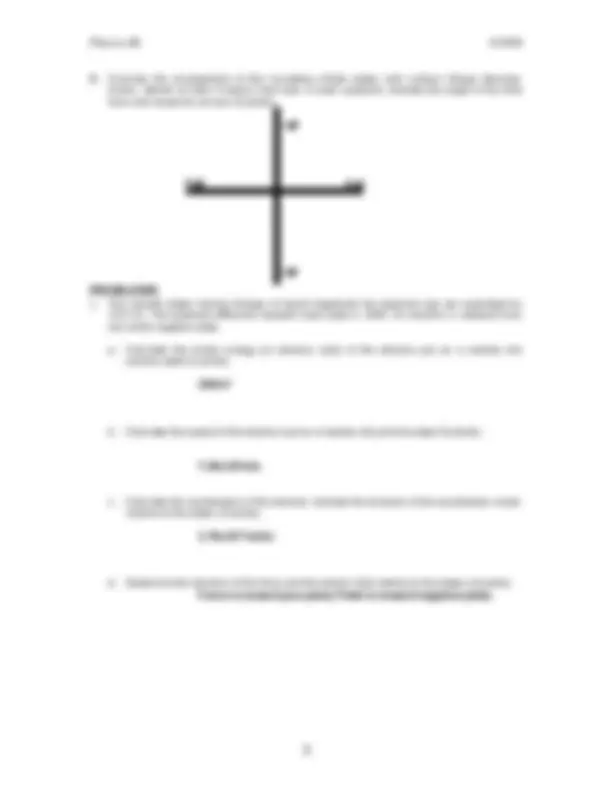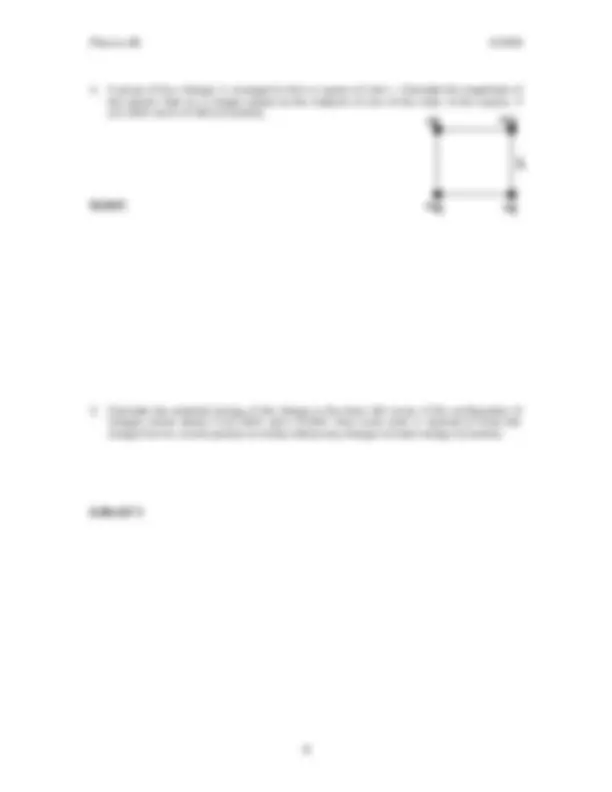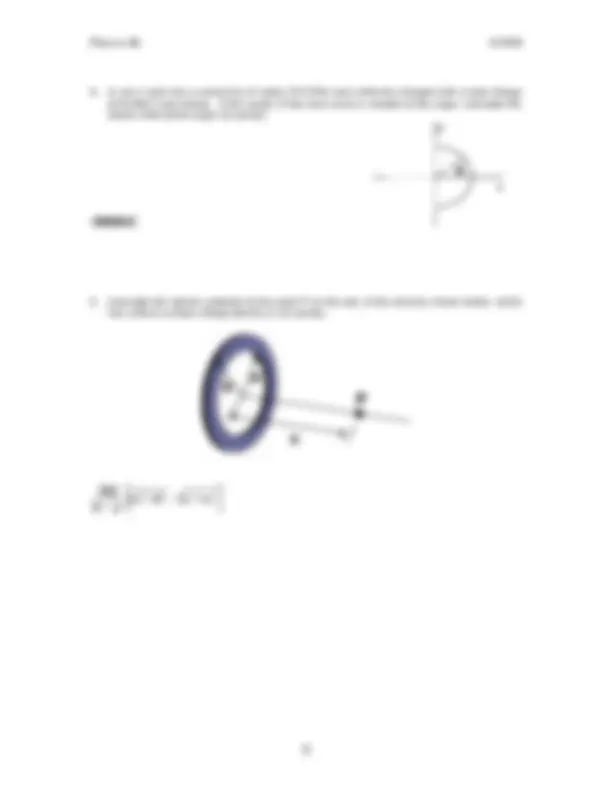





Study with the several resources on Docsity

Earn points by helping other students or get them with a premium plan


Prepare for your exams
Study with the several resources on Docsity

Earn points to download
Earn points by helping other students or get them with a premium plan
Community
Ask the community for help and clear up your study doubts
Discover the best universities in your country according to Docsity users
Free resources
Download our free guides on studying techniques, anxiety management strategies, and thesis advice from Docsity tutors
A physics exam for university students, consisting of multiple choice and short answer questions. The exam covers topics such as electric fields, electric potential, and gauss's law. Students are required to use given equations, conversion factors, and constants to solve problems. The exam includes problems involving calculus and vector analysis.
Typology: Exams
1 / 7

This page cannot be seen from the preview
Don't miss anything!




the end of class).
9
2
2
2
2
6
3
6
Part 1 (17 pts)
Prob 1 (12 pts)
Prob 2 (12 pts)
Prob 3 (17 pts)
Prob 4 (12 pts)
Prob 5 (12 pts)
Prob 6 (23 pts)
% (out of 100)
2 2
2 2
2 2
2 2 2
2 2
2
2 2
2 2
2 2
2 2
1. In each of the cases shown below, the charge and separation of the objects is the same. In
which case is the force between the two charged objects the least?
2. A dipole is oriented perpendicular to a uniform electric field as shown. The magnitudes of the
net force and torque on the dipole, respectively, are
A. 2qE, 0
B. 0,qLE
C. qE, qLE
D. 2qE, 2qLE
E. 0, 2qLE
3. If the electric potential V(x,y)=3xy, then the electric field vector is expressed as
3 x
ˆ i
4. A charge +q is located at the center of a cube having sides of length L. A second charge +q is
placed at the center of a cube having sides of length 0.5L. As a result, the flux through the
smaller cube is
A. one-eighth that of the large cube.
B. one-fourth that of the large cube.
C. the same as that of the large cube.
D. four times that of the large cube.
E. eight times that of the large cube.
Conducting
Sphere
Charge
the electric field on a charge placed at the midpoint of one of the sides of the square, if
q=1.25nC and L=0.30m (12 points).
charges shown above if q=1.25nC and L=0.30m. How much work is required to move this
charge from its current position to infinity without any change in kinetic energy (12 points).
-
Q=6.28nC (see below). If the center of the semi-circle is located at the origin, calculate the
electric field at the origin (12 points).
has uniform surface charge density (12 points).
2
2
2
2
2
2
P
a
b
x
x
y
+
-
+
-